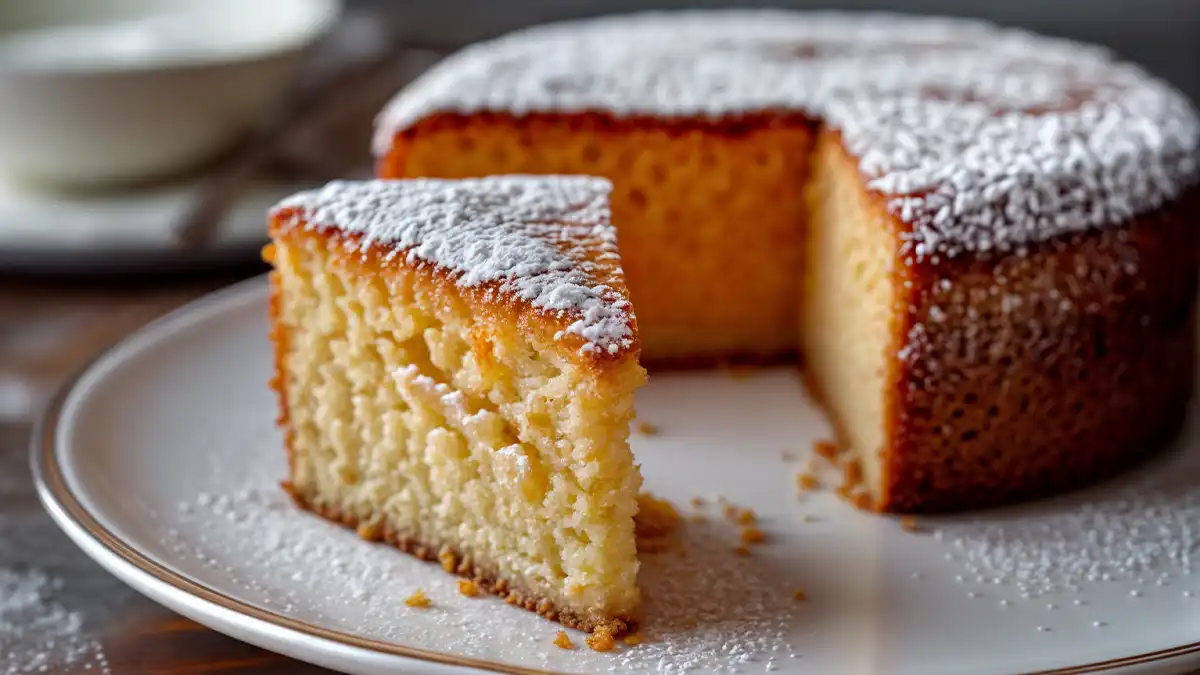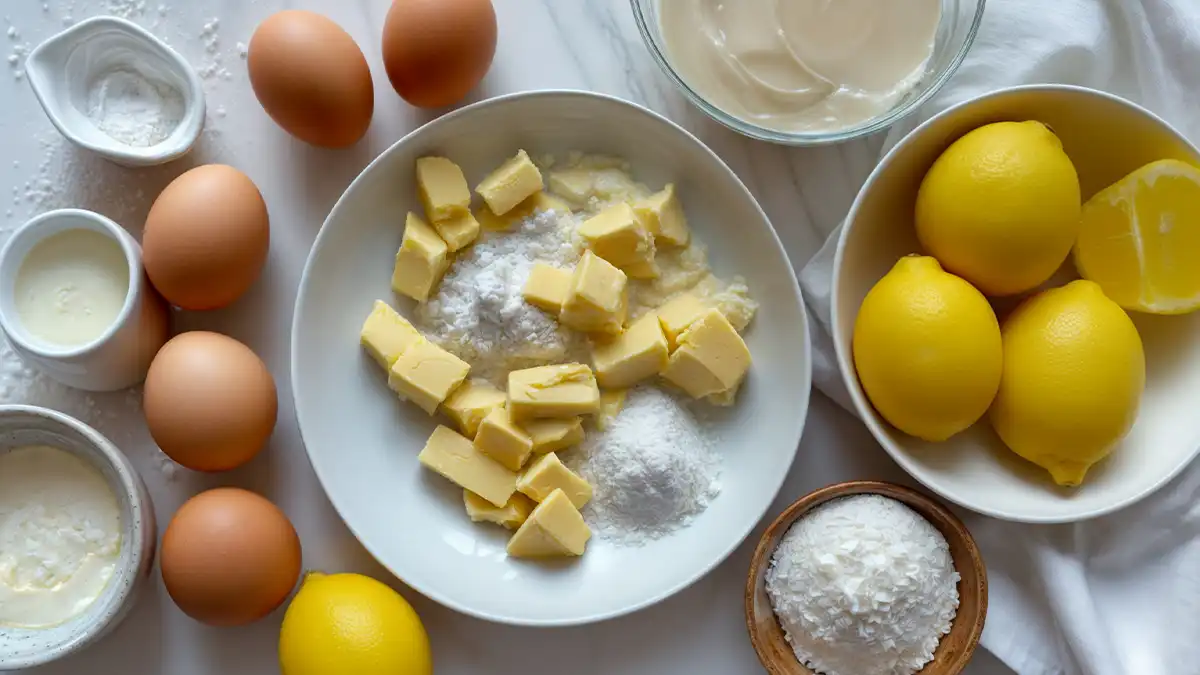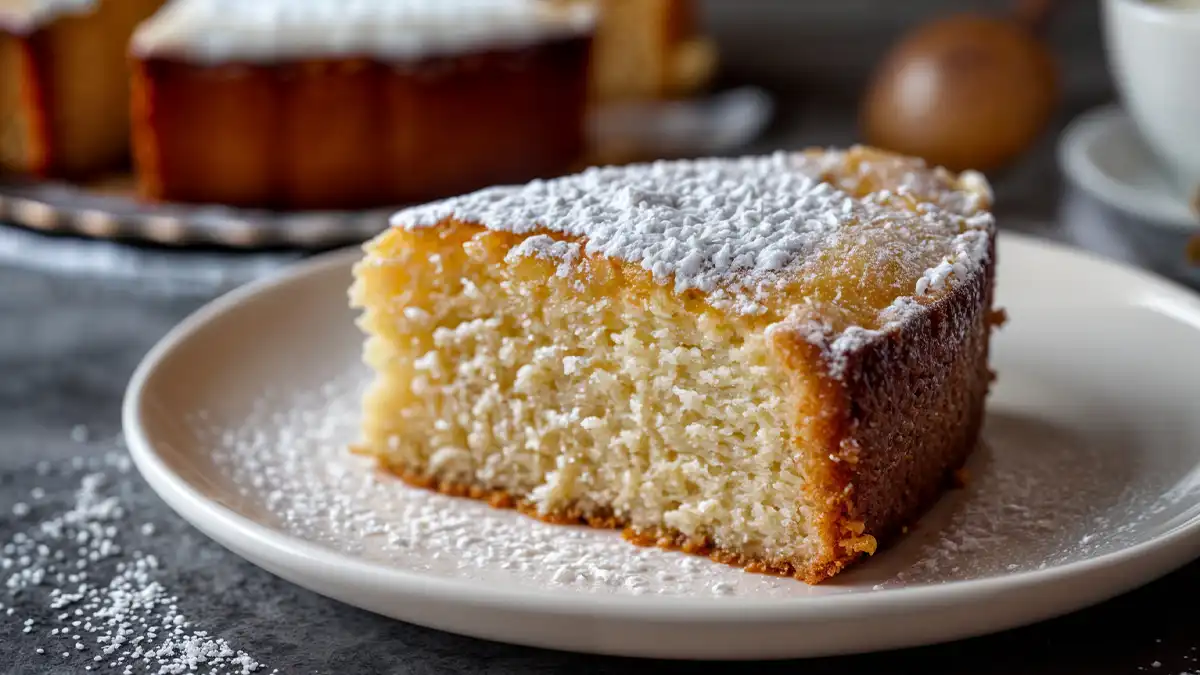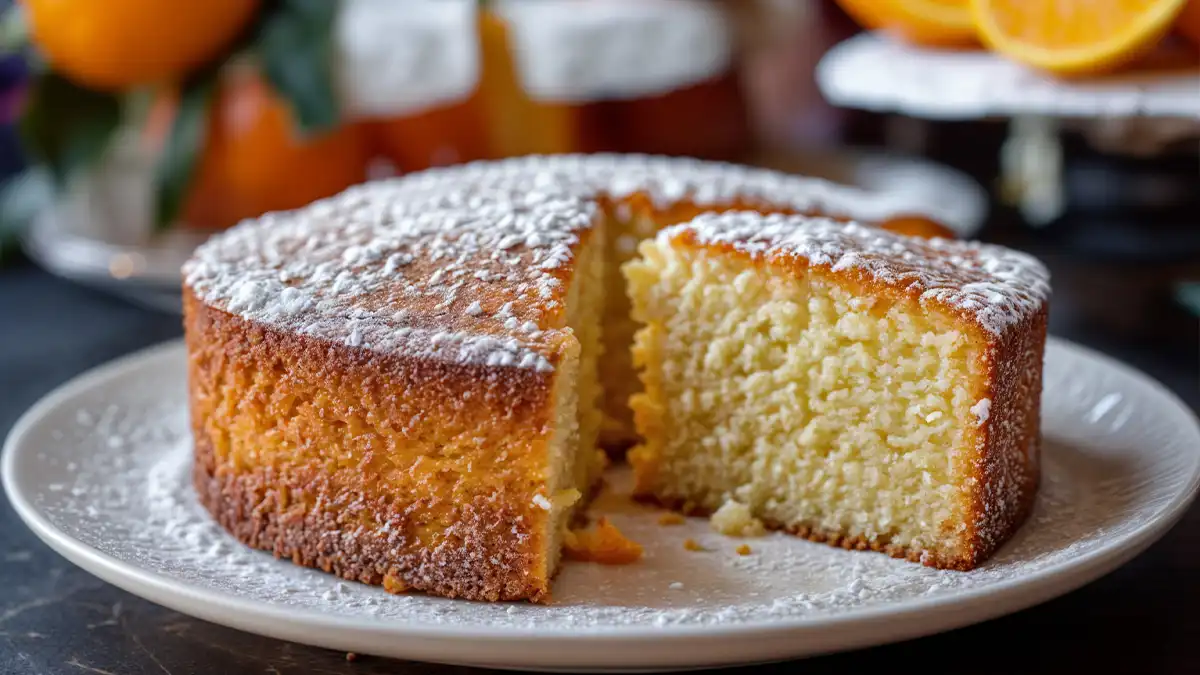Bishop Cake stands as a testament to the enduring charm of classic desserts. Its simple elegance and rich history make it a beloved choice for celebrations and quiet afternoons alike. In this introductory section, we’ll uncover the layers of tradition and taste that have carried Bishop Cake through the ages.
Table of Contents
| Section | Content Overview |
|---|---|
| Introduction | A captivating introduction to the heritage and appeal of this dessert. |
| Recipe and Ingredients | Detailed recipe and list of ingredients needed to bake this delicacy. |
| Historical Significance | Exploration of the origins and cultural importance of this treat. |
| Regional Variations | A look at how different cultures have adapted the classic recipe. |
| Serving and Pairing Ideas | Tips on how to serve and pair this dessert to enhance its flavors. |
| FAQs | Answers to common questions about preparing and enjoying this delicacy. |
| Conclusion | Reflection on the cultural impact and future trends in this dessert. |
What is Bishop Cake?
Bishop Cake, often revered as a quintessential pound cake, combines straightforward ingredients to create a dessert that is both comforting and luxurious. Typically, it features a dense, buttery texture with a hint of citrus, distinguishing it from its dessert counterparts. This cake’s appeal lies in its simplicity and the nostalgic experience it delivers with every slice.
Cultural and Historical Significance
Originally, the name “Bishop Cake” might evoke the imagery of grandeur associated with a bishop’s rich, opulent lifestyle. Though its exact origins are somewhat nebulous, the cake has been a staple in various cultures, symbolizing celebration and hospitality. It’s often served during important religious and community events, making it more than just a dessert—it’s a part of culinary heritage.
Overview of Popularity
The popularity of Bishop Cake has transcended generations and geographies, adapting to modern tastes while retaining its classic appeal. Here is a brief overview of its enduring presence in the world of baking:
- Historical mentions: References to Bishop Cake date back several centuries, with mentions in cookbooks and literature.
- Modern adaptations: Today, many bakers enjoy adding their twist to the traditional recipe, incorporating new flavors or decorating styles.
- Global appeal: From Europe to America, Bishop Cake enjoys popularity among diverse cultures, each adding a unique flavor to this age-old recipe.
| Region | Variation | Unique Ingredient |
|---|---|---|
| North America | Classic Bishop Pound Cake | Lemon zest |
| Europe | Bishop Cake with Almond Essence | Ground almonds |
| Asia | Tropical Bishop Cake | Mango puree |
As we delve deeper into the layers of Bishop Cake’s history and preparation, we’ll explore how this simple cake has become a beloved symbol of comfort and celebration across the world. Stay tuned as we next uncover the detailed recipe and ingredients that make Bishop Cake a favorite for many.
Bishop Cake Recipe and Key Ingredients
Delving into the specifics, let’s explore how to bake the perfect Bishop Cake. Known for its delightful simplicity, this cake requires precision and quality ingredients. Here, we’ll detail each step and ingredient, ensuring even novice bakers can achieve exceptional results.
Essential Ingredients for Bishop Cake
To start, gather your ingredients. The beauty of Bishop Cake lies in its straightforwardness, requiring only a handful of high-quality components to create a masterpiece of flavor and texture.
- Unsalted butter: The base of the cake, providing richness and moisture.
- Sugar: Adds sweetness and contributes to the golden crust.
- All-purpose flour: Gives the cake its structure.
- Fresh lemon juice: A splash of citrus brightens the overall flavor.
- Vanilla extract: Enhances the cake with warm, aromatic notes.
- Eggs: Bind the ingredients and add to the cake’s density.
Step-by-Step Baking Instructions
Follow these steps carefully to bake your Bishop Cake:
- Prepare your baking pan: Preheat your oven to 350°F (175°C) and grease a 10-inch bundt pan with butter, then dust with flour.
- Cream the butter and sugar: Using an electric mixer, blend the butter and sugar until fluffy.
- Incorporate the dry ingredients: Gradually add the sifted flour to the mix, blending at a low speed to avoid over-mixing.
- Add flavorings: Mix in the lemon juice and vanilla extract.
- Eggs: Add the eggs one at a time, mixing well after each addition.
- Bake: Pour the batter into the prepared pan and smooth the top. Bake for about 1 hour and 15 minutes, or until a tester comes out clean.
Incorporating Unique Twists
For those who enjoy experimenting with recipes, consider adding a personal touch to your dessert. If you’re intrigued by the blend of sweet and spicy flavors, try incorporating a hint of Raspberry Chipotle Sauce for an unexpected twist. This addition can create a fascinating flavor profile that will surprise and delight your guests.
Alternative Dietary Options
For bakers catering to special dietary needs, substitutions can be made to accommodate everyone:
- Gluten-Free: Substitute the all-purpose flour with a gluten-free blend.
- Vegan: Use plant-based butter and egg substitutes.
Here’s a helpful table of common substitutions:
| Ingredient | Substitute |
|---|---|
| All-purpose flour | Gluten-free flour blend |
| Butter | Vegan butter or margarine |
| Eggs | Flax eggs or commercial egg replacer |
Exploring these variations allows you to adapt the classic recipe to fit modern dietary preferences, ensuring everyone can enjoy this delightful dessert.
Stay tuned as we explore the historical significance of this dessert in our next section, deepening our understanding of its cherished roots. Meanwhile, check out another unique recipe twist with our Italian Hangover Cake, which also embraces the richness of traditional desserts with a unique blend of flavors.
Historical Significance of Bishop Cake
Bishop Cake is more than just a dessert; it’s a slice of culinary history. This section delves into the origins and evolution of Bishop Cake, highlighting its transition from a simple clergy favorite to a beloved treat enjoyed by many.
Origins and Evolution of Bishop Cake
The exact origin of Bishop Cake is shrouded in mystery, but it is believed to have been named after a bishop who favored this particular dessert. Over the centuries, it has evolved from a basic recipe to a more refined and celebrated dessert, reflecting changes in baking techniques and available ingredients.
- Early mentions: The earliest recipes were simple, focusing on the rich flavors of butter and sugar.
- Cultural adaptation: As Bishop Cake spread across regions, local ingredients and flavors were incorporated, giving rise to numerous variations.
Bishop Cake in Cultural Traditions
Bishop Cake holds a special place in various cultural traditions, often served during significant events and holidays. Its rich texture and straightforward preparation make it an ideal choice for gatherings, symbolizing hospitality and celebration.
- Religious celebrations: Often featured in religious feast days and celebrations.
- Family gatherings: A popular choice for family reunions and holiday meals.
For a deeper dive into the broader context of dessert evolution, check out this detailed look at Cake History Notes which traces the fascinating journey of cakes through the ages.
Modern Adaptations and Popularity
In recent years, Bishop Cake has enjoyed a resurgence in popularity, thanks to its versatility and the growing interest in reviving traditional recipes. Modern bakers often add their personal touch to the recipe, experimenting with flavors and presentation.
- For an example of how traditional recipes can be adapted with a modern twist, take a look at the Boursin Cheese Pasta Recipe, which transforms a simple ingredient into a gourmet delight.
Stay tuned for our next section where we explore the various regional variations of this dessert, each adding its unique twist to this timeless recipe.
Regional Variations of Bishop Cake
Bishop Cake may have started with a simple recipe, but as it traveled across continents, each culture added its own signature to this classic dessert. In this section, we explore the fascinating regional adaptations that showcase the versatility of Bishop Cake.
European Influences on Bishop Cake
In Europe, Bishop Cake takes on a slightly different character, with bakers often incorporating local flavors such as almond essence or brandy. These additions reflect the regional culinary preferences and availability of local ingredients.
- British Version: Often includes dried fruits and nuts, soaked in brandy.
- Italian Style: Might feature citrus zest or almond essence for a Mediterranean twist.
To get a taste of another European dessert adapted to local tastes, check out Jamaican Beef Patty Recipe, which creatively melds flavorful spices with traditional techniques.
North American Adaptations
In North America, the simplicity of the Bishop Cake is cherished, but variations often include modern twists like adding vanilla bean paste or using organic ingredients to cater to contemporary tastes.
- American Classic: Typically sticks to the basic ingredients but might include high-quality vanilla extract for an enhanced flavor.
- Canadian Variation: Sometimes features maple syrup as a sweetener, adding a distinctly Canadian flavor to the traditional cake.
Comparing Bishop Cake Variations
The table below provides a quick comparison of different regional variations of Bishop Cake, highlighting the unique ingredients and flavors introduced by various cultures:
| Region | Unique Ingredient | Characteristic Flavor |
|---|---|---|
| Europe | Almond essence | Nutty and aromatic |
| North America | Vanilla bean paste | Rich and fragrant |
| Caribbean | Rum or brandy | Robust and spirited |
For further reading on how traditional recipes are adapted across different cultures, consider exploring the article Outlining – Writing a Paper, which provides insights into structuring content that reflects cultural diversity.
In the next section, we’ll delve into serving and pairing ideas that can elevate this dessert into a show-stopping treat at any gathering. Stay tuned for creative ways to present and enjoy this beloved delicacy.
Serving and Pairing Ideas for Bishop Cake
Delightful on its own, but with the right pairings and presentation, it can be transformed into an extraordinary dessert experience. This section provides practical tips and creative ideas for serving and enhancing the flavors of your cake.
Best Practices for Serving Bishop Cake
Serving Bishop Cake at its best involves a few key practices that ensure its texture and flavors are fully appreciated.
- Optimal Serving Temperature: This dessert is best enjoyed at room temperature. This allows the buttery texture to be fully appreciated.
- Slicing: Use a serrated knife to cleanly cut through the cake without crushing its delicate crumb.
Creative Pairing Suggestions
The versatile nature of this dessert makes it an excellent candidate for various pairings, from drinks to accompaniments.
Drinks that Complement Bishop Cake
- Tea: A classic Earl Grey or chamomile tea pairs wonderfully, enhancing the cake’s subtle flavors without overpowering it.
- Coffee: A robust espresso or a creamy latte can complement the richness of the cake.
- Dessert Wines: A sweet Moscato or a rich Port can elevate the dining experience, especially when the cake is served as an after-dinner treat.
Accompaniments to Elevate the Cake
- Fruit Compotes: A berry or peach compote adds a tart contrast to the sweet, dense cake.
- Whipped Cream: A dollop of lightly sweetened whipped cream can add a luxurious element.
- Ice cream: Pairing the cake with a scoop of vanilla ice cream creates a classic combination, especially if you serve the cake warm.
Presentation Ideas for Special Occasions
Presentation can turn the simple act of serving into a memorable event. Here are some ideas to dress up your cake for any occasion:
- Dusting with Powdered Sugar: A simple yet elegant touch that enhances the visual appeal.
- Edible Flowers: Adding edible flowers around the cake or on top can create a festive look.
- Custom Toppings: Customize toppings based on the occasion—sprinkles for a birthday or chocolate shavings for an anniversary.
Pairing and Presentation Tips
| Pairing Type | Suggestion | Recommended for |
|---|---|---|
| Drink | Espresso | Enhancing the cake’s richness |
| Accompaniment | Berry Compote | Adding a tart contrast |
| Presentation | Dusting of Powdered Sugar | Elegant gatherings |
As you explore these serving and pairing ideas, remember that the best part about baking is the joy it brings. Whether you’re serving this cake at a formal dinner or a casual family gathering, the key is to enjoy the process and the pleasure of sharing your creation.
In our next section, we will tackle some frequently asked questions about this cake, providing you with the knowledge to bake and serve it with confidence.
FAQ
In this section, we address some common queries and misconceptions about Bishop Cake, providing clear and helpful answers to enhance your baking and enjoying experience.
What makes Bishop Cake different from other pound cakes?
Many often consider Bishop Cake a type of pound cake, but it stands out due to its specific texture and flavor profile, which typically includes a hint of citrus like lemon or orange. This cake earns its reputation for its dense, buttery texture, balanced with a delicate hint of freshness from the citrus.
How long can I store Bishop Cake?
You can store Bishop Cake at room temperature for up to three days when you keep it in an airtight container. For longer storage, you can refrigerate it for up to a week or freeze it for up to three months. To ensure the cake retains its moisture and flavor, wrap it tightly in plastic wrap before storing.
Can Bishop Cake be made gluten-free?
Yes, you can make a gluten-free version of Bishop Cake by substituting the all-purpose flour with a gluten-free flour blend designed for baking. Ensure that you choose a blend that can replace the original ingredients in a 1:1 ratio to avoid changes in texture and density.
Is Bishop Cake suitable for vegetarians?
Absolutely! Bishop Cake is naturally vegetarian as it contains no meat or meat-derived ingredients. However, it includes eggs and dairy products, so it is not suitable for vegans unless you make substitutions.
How can I make Bishop Cake more moist?
To ensure your Bishop Cake is exceptionally moist, make sure not to overbake it. Keeping a close eye on the cake during the final minutes of baking and performing the toothpick test can prevent it from drying out. Additionally, incorporating a tablespoon of yogurt or sour cream into the batter can enhance the cake’s moisture.
What are some creative ways to decorate Bishop Cake?
You can decorate Bishop Cake in many delightful ways to suit any occasion:
- Simple Glaze: Drizzle a simple icing sugar glaze flavored with lemon or vanilla over the top for a sweet finish.
- Fresh Berries: Top the cake with fresh berries for a burst of color and freshness.
- Nut Topping: Sprinkle chopped nuts like almonds or pecans for added texture and flavor.
With these FAQs, you now possess better skills for baking and serving Bishop Cake like a pro! Enjoy the process and relish the delicious results of your baking adventure.
Conclusion
As we conclude, remember that each cake you bake adds a page to the ongoing story of this cake. Whether sticking to the traditional recipe or adding a personal twist, the enjoyment of crafting and sharing this beloved dessert continues to unite and delight people around the world.




